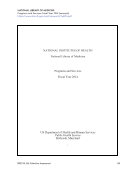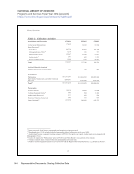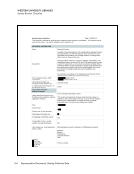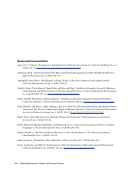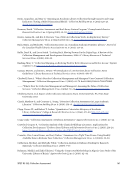58 Survey Results: Survey Questions and Responses
Collection assessment projects have been essential in supporting shared collecting initiatives with
partner libraries, particularly our “2CUL” partnership with Columbia University Libraries and the
member libraries of the Borrow Direct/Ivy Plus consortium.
Consortial collection comparisons, collaborative retention/long-term storage agreements. Shift from
approval plans/just-in-case to DDA/just-in-time purchasing.
Continuing to build a culture of assessment with librarians asking questions of the data, and what it
means for collection development decision making.
Currently reverse applying weeding criteria to identify high needs areas of the collection
for management.
Deciding the location of print collections (on-site, off-site, branch libraries).
Ensuring we’re meeting the needs of our students and faculty.
Fund raising compact shelving and other collection management equipment
It is central to our academic program reviews and to strategic budget requests.
Most assessment actions have been related to evaluation of resources for cancellation or retention. Also
a bit of energy for weeding and relocation to high-density storage.
Ongoing assessment of continuing resources is used to reallocate funds toward
interdisciplinary resources.
Successfully advocated for preservation environment offsite storage facility.
To make decisions about deselection and shared storage.
Used to justify increased support for collections budget.
49. Please briefly describe up to three challenges your library has encountered when assessing
collections. Include any methods that were successful in overcoming that challenge. N=54
Ability to integrate collections data with institutional data
Ability to quickly create detailed and varied reports—need more technical statistical analysis skills
Assessment is not tied to strategic goals, so recommendations are not necessarily followed.
Assessments are very time-consuming.
It is difficult to gather some necessary data.
There can be disagreement on what is relevant data.
Collecting COUNTER data from publishers.
Lack of “extra” data variable, e.g., subject codes/BISAC codes and LC call numbers
Collection space: ongoing analysis based on space reports and collection review
Collection funding: some success with shared funding of some journal packages
Complexity
Lack of tools
Lack of dedicated staff
Collection assessment projects have been essential in supporting shared collecting initiatives with
partner libraries, particularly our “2CUL” partnership with Columbia University Libraries and the
member libraries of the Borrow Direct/Ivy Plus consortium.
Consortial collection comparisons, collaborative retention/long-term storage agreements. Shift from
approval plans/just-in-case to DDA/just-in-time purchasing.
Continuing to build a culture of assessment with librarians asking questions of the data, and what it
means for collection development decision making.
Currently reverse applying weeding criteria to identify high needs areas of the collection
for management.
Deciding the location of print collections (on-site, off-site, branch libraries).
Ensuring we’re meeting the needs of our students and faculty.
Fund raising compact shelving and other collection management equipment
It is central to our academic program reviews and to strategic budget requests.
Most assessment actions have been related to evaluation of resources for cancellation or retention. Also
a bit of energy for weeding and relocation to high-density storage.
Ongoing assessment of continuing resources is used to reallocate funds toward
interdisciplinary resources.
Successfully advocated for preservation environment offsite storage facility.
To make decisions about deselection and shared storage.
Used to justify increased support for collections budget.
49. Please briefly describe up to three challenges your library has encountered when assessing
collections. Include any methods that were successful in overcoming that challenge. N=54
Ability to integrate collections data with institutional data
Ability to quickly create detailed and varied reports—need more technical statistical analysis skills
Assessment is not tied to strategic goals, so recommendations are not necessarily followed.
Assessments are very time-consuming.
It is difficult to gather some necessary data.
There can be disagreement on what is relevant data.
Collecting COUNTER data from publishers.
Lack of “extra” data variable, e.g., subject codes/BISAC codes and LC call numbers
Collection space: ongoing analysis based on space reports and collection review
Collection funding: some success with shared funding of some journal packages
Complexity
Lack of tools
Lack of dedicated staff
















































































































































